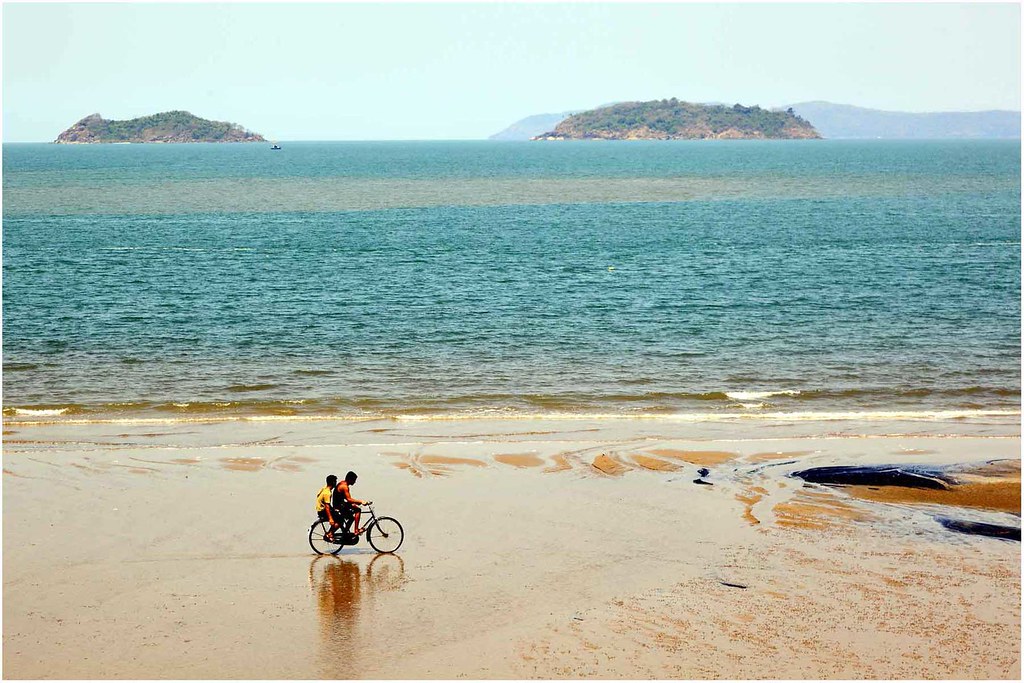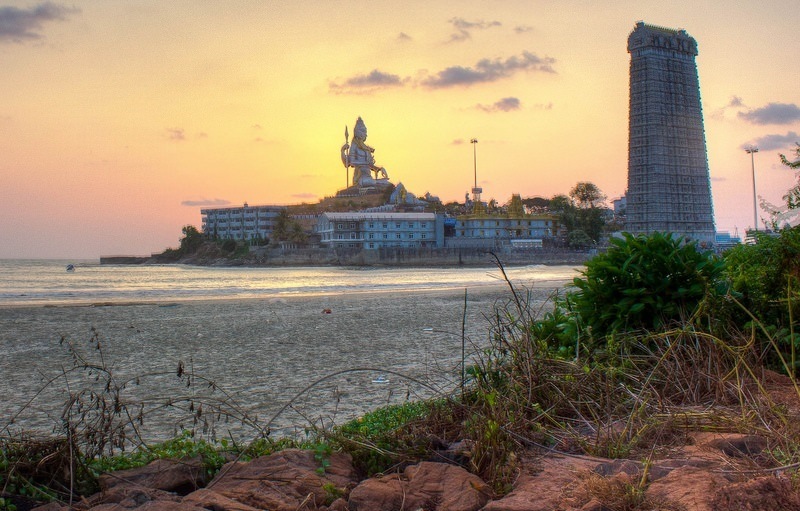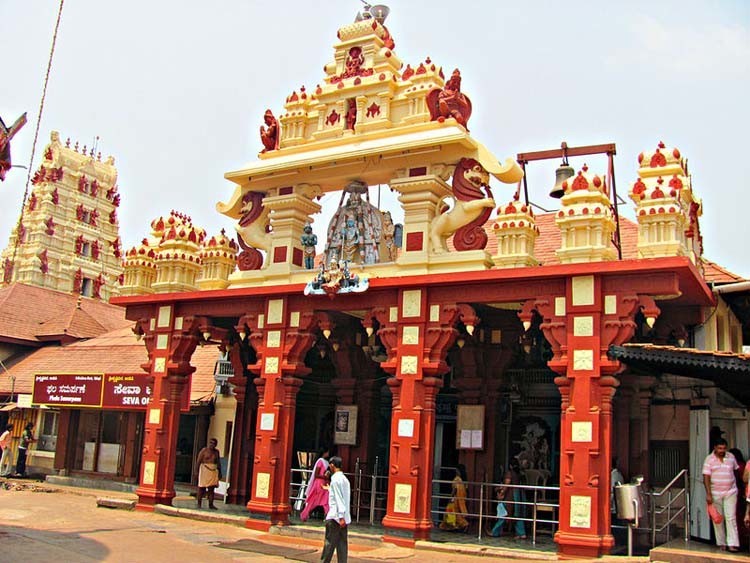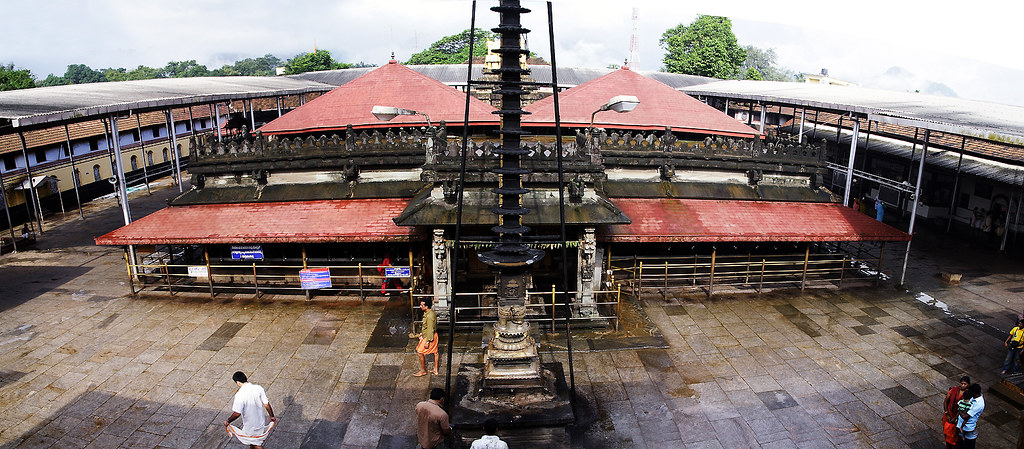What’s it about travelling that greatly transforms one’s perspective?
Is it the first-hand realization of the transience of worldly affairs that we otherwise
put at the center of our existence? Is
it because, for a brief period, we tend to remove our self-centric lens and
instead try to be more empathetic to our surroundings? There is something
profoundly meaningful and satisfying about travelling.
While the above is true of traveller and pilgrim, the
latter’s journey extends both ways: external and inner. For the philosophical,
a pilgrimage is more than an act of travelling, transcending physical realms
and touching the mind more than the body.
The Tour Begins
My one self-imposed condition, during this journey, was
to be as Spartan as possible. Though my meagre savings at that point might have
been a factor, I think the decision was prompted by the genuine desire to travel
with the masses, to experience from close quarters how their everyday life is.
When I was starting from Goa, the irony of the situation
wasn’t lost on me. Here was I, travelling from the famed materialist paradise
to the Bhookailash Gokarna in a rickety bus. My first stop was at Karwar, the
Kashmir of Karnataka. At one stretch was a serpentine road racing forward in a
body of water; seeing water at both banks of the road (Arabian Sea and
backwaters) is a sight of behold. To quote Rabindranath Tagore, "The sea beach of Karwar is certainly a fit
place in which to realize that the beauty of Nature is not a mirage of the
imagination, but reflects the joy of the Infinite and thus draws us to lose
ourselves in it.”
When Mahabharatha proudly claims "what is found here may be found elsewhere
but what is not found here cannot be found elsewhere", it is no
exaggeration, for however unique one’s own circumstances are, it is fairly easy
to find a parallel from the epic. In a
modern parallel, “just when I thought I was out, they pull me back in”
(Godfather 3). Traversing a trail of failures, just when I thought I had
finally put my past behind, fate intervened to put me back, this time on a
trial of fire. Long story short, faced with closed doors in all directions and with
little else to do, I hit the road, eager perhaps to experience change, as much
as to seek divine intervention.
 |
| Karwar Beach |
Gokarna
At Karwar, I learnt that it is best to go
Ankola, from where Gokarna is easily reachable. I reached Gokarna mid-noon, and first had darshan of Lord Ganesha and removing my
upper garments sought the darshan of Lord Mahabaleshwara. Hungry, I decided to
seek refuge in the annadaanam program at the temple and seldom did I have a
more sumptuous meal. I strolled along the beach behind the temple for a while,
before resuming the travel.
 |
| The famous story of Lord Ganesh in brahmin disguise, upsetting Ravana's plans |
I saw a rare murthy of Lord Ganesha in standing posture
at my uncle’s home. Idagunji, therefore, was my next stop. From Gokarna to
Kumta, and from there to Honavar was a tedious enough journey, but nothing
prepared me for the small tempos, the only mode of transport to reach Idagunji
which was somewhat in the interiors.
Seeking Ganesha’s blessings, I sought the way to reach Murudeshwar.
Seeking Ganesha’s blessings, I sought the way to reach Murudeshwar.
Murudeshwar
 Enroute Manki, I reach Murudeshwar just on time to see
the sunset, but not nearly enough to avail the services of the elevator at the
Gopuram, which gives, I’m told, a terrific view of the sea and temple and the world’s
second-tallest statue of Lord Shiva. The temple itself appears halfway in the
sea. The darshan was elevating. Between calls from home, I decided to halt at Udupi,
though it would be midnight before I reach it, just to enable me to have early
morning darshan.
Enroute Manki, I reach Murudeshwar just on time to see
the sunset, but not nearly enough to avail the services of the elevator at the
Gopuram, which gives, I’m told, a terrific view of the sea and temple and the world’s
second-tallest statue of Lord Shiva. The temple itself appears halfway in the
sea. The darshan was elevating. Between calls from home, I decided to halt at Udupi,
though it would be midnight before I reach it, just to enable me to have early
morning darshan.
Once aboard the bus, I pondered that despite one’s inborn
talent and problem-solving capabilities, despite the care of others, despite
the benefits of upbringing, it behoves a man to know that things
are basically beyond one’s control. The self-help bookish talk of courage and
positive attitude conquering all appear innocuous at best, empty claptrap at
worst in such times!
Udupi
 Reaching Udupi at midnight, I looked for austere
hotels, and slept soundly in a ill-dimensioned room that probably emerged
from poor planning (and came cheaper). Bathing in the first rays of dawn, I reached the temple. Udupi, with its mathas around, sankirtanam, and
holy smoke is like no ordinary town. It reminded me of Srirangam, where the entire
place reverberated with the divine name. Incidentally, both these places are the
fountainhead of two schools of Indic philosophy: Sri Ramanuja expounded Vishistadvaitam
(Srirangam) and Sri Madhvacharya propounded Dvaitam (Udupi). It is said that to a devotee,
every travel is like pradakshina; and one must visit the vicinity
of temple to see a living testimony of this mindset.
Reaching Udupi at midnight, I looked for austere
hotels, and slept soundly in a ill-dimensioned room that probably emerged
from poor planning (and came cheaper). Bathing in the first rays of dawn, I reached the temple. Udupi, with its mathas around, sankirtanam, and
holy smoke is like no ordinary town. It reminded me of Srirangam, where the entire
place reverberated with the divine name. Incidentally, both these places are the
fountainhead of two schools of Indic philosophy: Sri Ramanuja expounded Vishistadvaitam
(Srirangam) and Sri Madhvacharya propounded Dvaitam (Udupi). It is said that to a devotee,
every travel is like pradakshina; and one must visit the vicinity
of temple to see a living testimony of this mindset.
Indic philosophy is often held responsible for the otherworldliness
that Hindus supposedly possess and profess. But, while the inevitability of
destiny is manifest in many places, the theory that it exhorts people to
indulge in blasé denial is ill-founded. At the end of Bhagavat Geeta, Arjuna,
now enlightened by Lord Krishna, executes the most materialist act (though with a totally transformed attitude).
Dharmasthala
That Hindu society hasn’t yet lost its public spirit
(this-worldliness) is amply demonstrated by the public orientation of
Dharmasthala. Here is a rare confluence of visionary leadership and
institutional excellence. Veerendra Heggade, the Padma Vibhushan
recipient and Dharmadhikari is verily a karmayogi if the aura he carries around this part of
Karnataka is to be believed. One cannot a find a more profound example of
seamless spectrum of Indic religions when they learn that Heggade is a Jain. Jainism
and Buddhism are no more than the branches of the same Indic tree that nourishes
thousands of traditions (including the materialist Carvaka philosophy).
 |
| Annadaanam program |
Having the darshan of Sri Manjunatha, I was amazed at the
huge administrative setup around this place. If state governments across India
wish to learn a lesson or two about free mid-day meal program, here is a case
study worth emulating. In a country where people are allergic to dine in public
places, where annadaanam is associated with poor hygiene, it is nothing short
of miracle that pilgrims here recommend it to first-timers.
You’ll learn why soon enough. In the gigantic dining hall,
‘speedy delivery’ is the mantra. Quickly served, I rise just in time for mechanised
tools-carrying workers to promptly clean the area.
Kukke
From Dharmasthala to Kukke is a hilly terrain, with many
scenic sights of Western Ghats to behold. Kukke Subrahmanya, where Karthikeya
or Murugan as Tamils call Him, is worshipped as the lord of all serpents. For
people with Naga Dosha, this is the place to visit. Worship of Lord Subrahmanya
is recommended for couples seeking children, aspirants seeking job, and people
taking up ambitious projects.
 The darshan was good, and I was joined by a couple of
young friends, who reached Kukke through bike, all the way from Bangalore. After
having a short chat with these IT guys, I was contemplating my next move. To
stand steady by my condition, it was prudent to get back to Dharmasthala for
the night.
The darshan was good, and I was joined by a couple of
young friends, who reached Kukke through bike, all the way from Bangalore. After
having a short chat with these IT guys, I was contemplating my next move. To
stand steady by my condition, it was prudent to get back to Dharmasthala for
the night.
On a sidenote, I was jobless at this point, and
desperately needed one, before (for) fighting a battle thrust on me despite my
best efforts to avert it. Without as much as posting a resume online, I got
one; in due course of time the hostile scenario dissipated, thanks to a multitude of
changes. Today, I can’t help thinking that hidden
forces were at work, which emerged according to one’s divine script. That faith
and acceptance are sometimes that only reliable toolkit for one’s emotional
survival and wellbeing.
Back to Dharmasthala
It was sunset by the time I reached Dharmasthala, and I
was thinking of dining and sleeping at some hotel. Luckily for
me, a passerby whom I enquired was against the thought of having
food outside, especially because I was on time for annadaanam program.
Weary-limbed, I was back on road after a quick meal. Overhearing my
phone-call to a friend wherein I was seeking information on hotels, another
passerby quickly came to my aid. Knowing that I would be on foot early next
morning, he suggested the boys’ hostel nearby. I paid Rs. 50, of which Rs. 30
was refunded the next day (I can’t recall the exact amount now). The room was a
narrow one, with a railway sleeper-coach bedsheet put up for sleep. Up next dawn, my morning ablutions were quickly finished at the common
bathroom at the end of the corridor.
Kollur
 Now I reach the final stretch of my journey, aptly ending
with the darshan of Divine Mother. Sri Mookambika Devi, the story goes,
appeared before Sri Sankaracharya, who pleaded with Her to come back to his
birthplace Kerala. On one condition: he was told that the Mother will follow
him home, but he shouldn’t look back. At this destined location Sri
Sankaracharya looked back to ascertain if She was indeed following him, and,
therefore, She continued to stay there forever.
Now I reach the final stretch of my journey, aptly ending
with the darshan of Divine Mother. Sri Mookambika Devi, the story goes,
appeared before Sri Sankaracharya, who pleaded with Her to come back to his
birthplace Kerala. On one condition: he was told that the Mother will follow
him home, but he shouldn’t look back. At this destined location Sri
Sankaracharya looked back to ascertain if She was indeed following him, and,
therefore, She continued to stay there forever.
The story also explains why Keralites form the major part
of pilgrims here. Indeed, the above story was narrated to me by an elderly,
retired bureaucrat from Kerala, my co-passenger in bus. Legends surround this
temple, and the latest doing rounds was that a powerful politician languishing in jail, finally
got bail (after several failed attempts) only after performing a Chandi Homam here. As was my modus operandi
for this trip, I ate at the annadaanam program here. I was told that the easiest way back Goa is by rail and reaching the nearest station at Byndoor
will greatly simplify my return journey.
End of the Road
I never doubted the continuity of Indic culture across
the length and breadth of our nation, having personally witnessed it at
least in parts where I travelled. But all of it is no match to experiencing the
pervasive ethos of our culture and the underlying quintessential Indic nature
first-hand.
My inner world, however, was vacillating between
turbulence and impotent rage. Exile, as demonstrated in the epics, isn’t just
an extended holiday; it is a drastic fall from one’s way of life. This is a
common theme in history. When driven to the edge by enemies and circumstances,
it pays to concede defeat, accede territory and survive.
Banging one’s heads against the inevitable might make for an interesting novel, but it is
seldom appropriate for real life. Tactical retreat is the reality of great military
generals and statesmen, not a fodder for romance. Yes, the situation is very humiliating,
it is exhausting. But one has to live in order to fight another day.
In my rail journey, I was accompanied by a just-retired
salesman who, in line with his Guru’s wish, is now using his business expertise
towards managing a Math (Chitrapur Math, if I remember right). The whole journey was undertaken with less than Rs. 4,000, if memory serves me well!
Life is never about the destination, it is about what happens on the path to the destination, about the journey towards self-discovery. This was one such pilgrimage.


The last lines "The whole journey was undertaken with less than Rs. 4,000, if memory serves me well!". This is what Journey about. Memory always remains irrespective of expenditure of the Journey but how good tourists or co-passengers come across. We people think of journey and memories but more to say the word 'Journey' gives some simple meaning Joy in way. This sums up how much route one traveled in but how joyful and heart fully traveled. Good one bro, probably soon we should have a tour soon.. Mantri
ReplyDelete